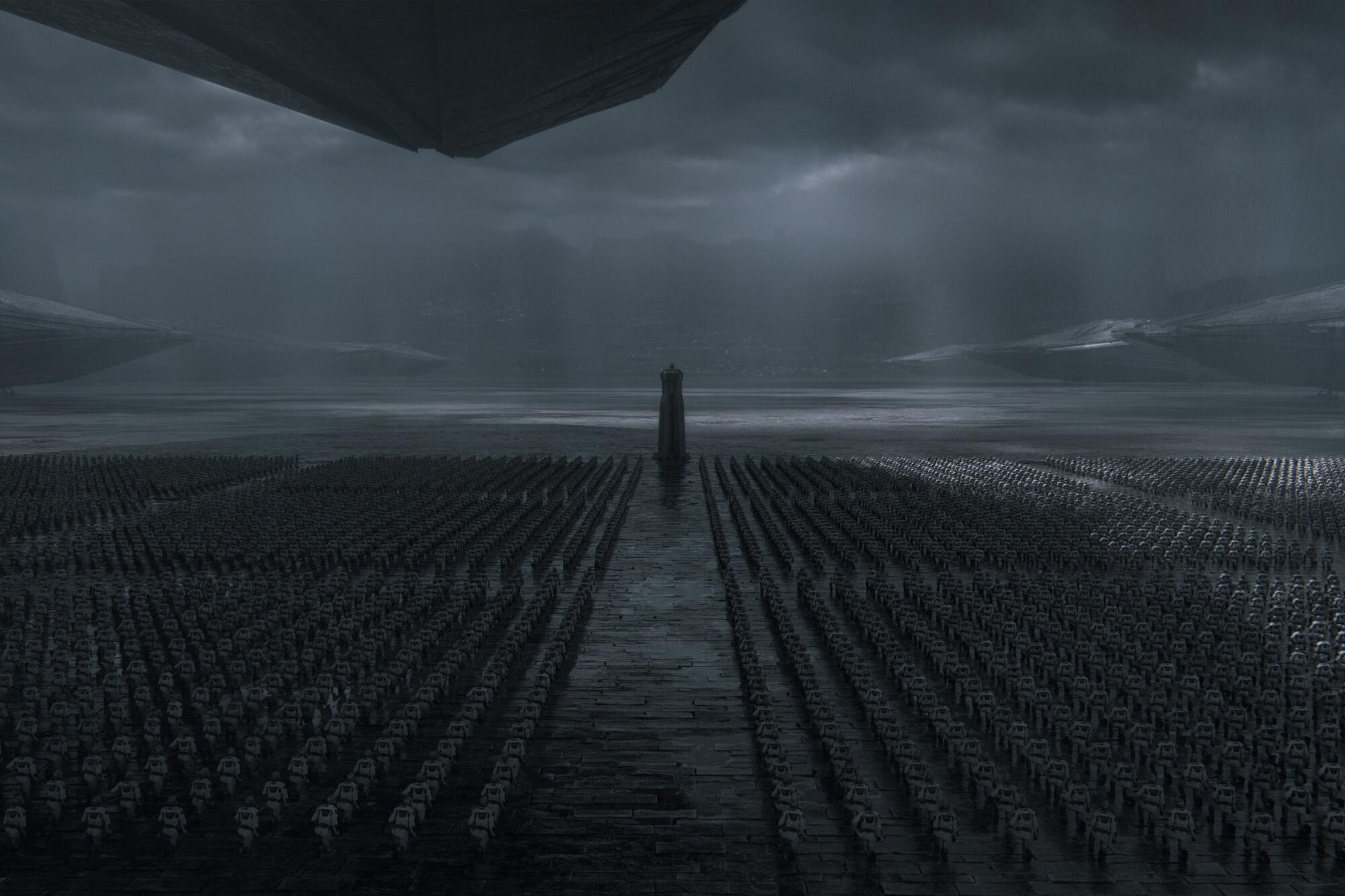
Fascist architecture. Insectoid war machines. Desert hellscapes. These are just a few of the hypnotically desolate “Dune” scenarios configured by production designer Patrice Vermette. After collaborating with “Dune” director Denis Villeneuve on four previous movies — including “Arrival,” for which he earned an Oscar nomination — Vermette has become adept at generating ambitious set pieces.
Still, “Dune” proved especially daunting, given its impossible-to-adapt reputation. But when he read Frank Herbert’s 1965 sci-fi novel for the first time, Vermette enthusiastically committed to seven months of pre-production concept development and six months of principal photography.
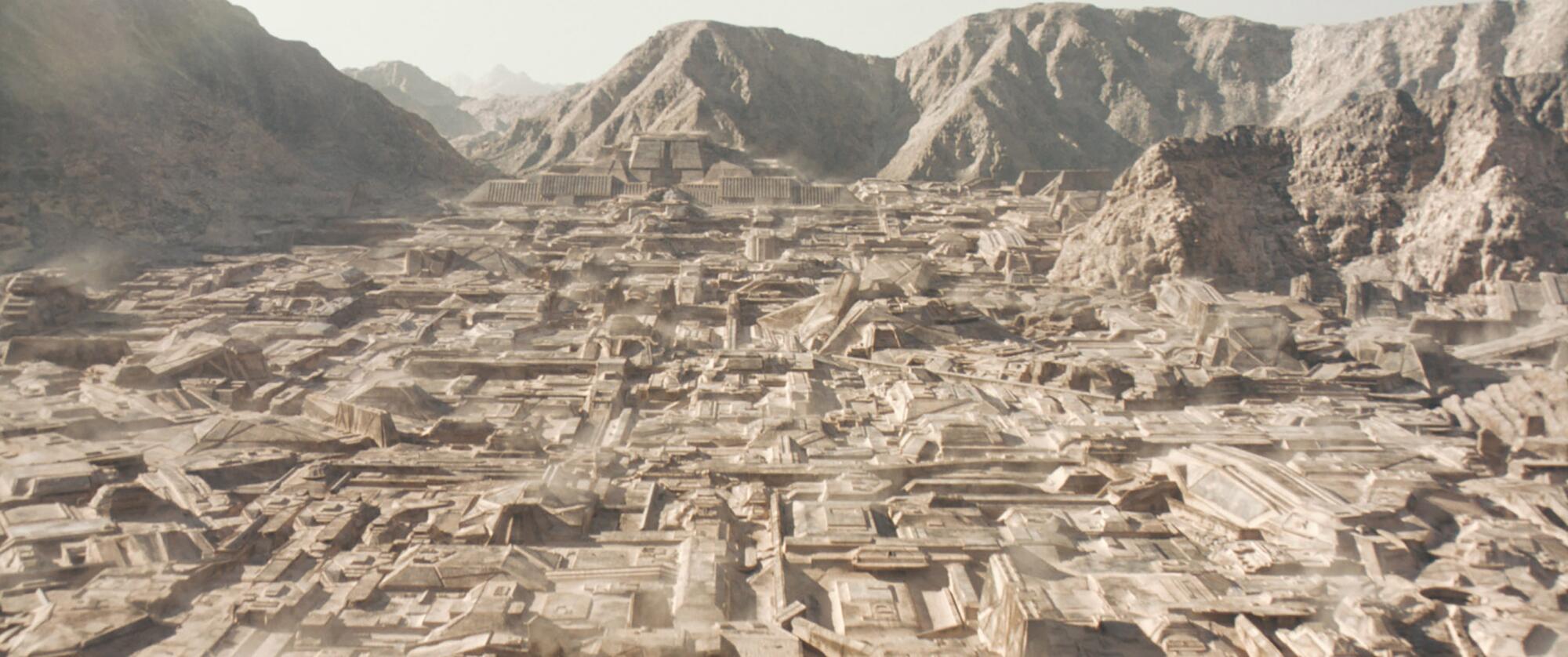
Speaking from a movie set in Australia, Vermette says, “This book’s been in Denis’ mind since he was a teenager, so I decided, ‘Let’s go back to the roots of the original material and look for cues that will help us do the world-building.’ And the first thing that hit me when I read ‘Dune’ was the scale.”
To that end, Vermette and his team, hewing to Villeneuve’s “No green screen” mandate, constructed “Dune’s” most intimidating piece of architecture on the backlot of Origo Studios in Budapest. The Residency, a huge concrete fortress squatting on the desert planet of Arrakis, originally served as headquarters for evil House of Harkonnen colonialists harvesting hallucinogenic spice from the desert and exploiting indigenous Fremen.
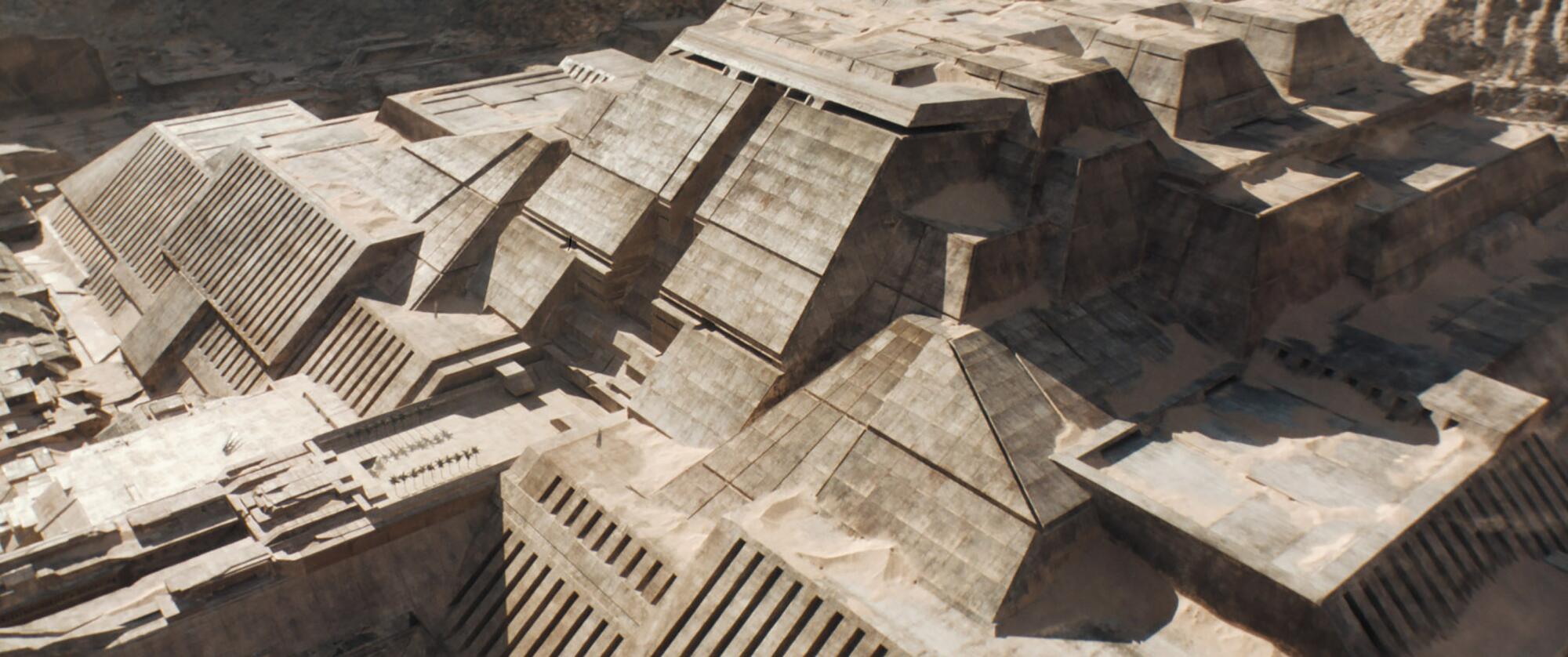
“In the book,” Vermette says, “Frank Herbert says it’s the biggest construction ever built by humankind and as a reader, you go ‘Wow, this is great.’”
The weirdly angled building, made from wood and high-density Styrofoam, draws in part from the Brutalist school of midcentury architecture once popular in Iron Curtain countries. “There’s also influence from Egypt, from Mesopotamia’s ziggurat architecture, from Aztec architecture and from World War II bunkers, which is the first thing Denis showed me,” Vermette says. “It’s a big mix because, for us, design should always be responding to reality. In this case, the Residency is a response to the landscape. Why so angular? The wind tears through metal at 750 kilometers an hour! The angularity allows the wind to sweep over the building.”
Ideology is also baked into the structure, he says. “House Harkonnen probably went, “We’re the big conqueror so let’s build something that the Fremen will look at and say, ‘Oh, my God, these are strong people, we need to obey them.’ That’s the message in the architecture.”
The filmmakers traveled to Norway for exterior shots of the planet Caladan, home to prince Paul Atreides (Timothée Chalamet). “Caladan is about tradition,” Vermette says. “For Denis and I, our favorite season is fall, in Canada. There’s always a mist in the air and you’ve got darker green from the moss and the Norfolk pine trees. We wanted to establish that kind of atmosphere for Caladan.”
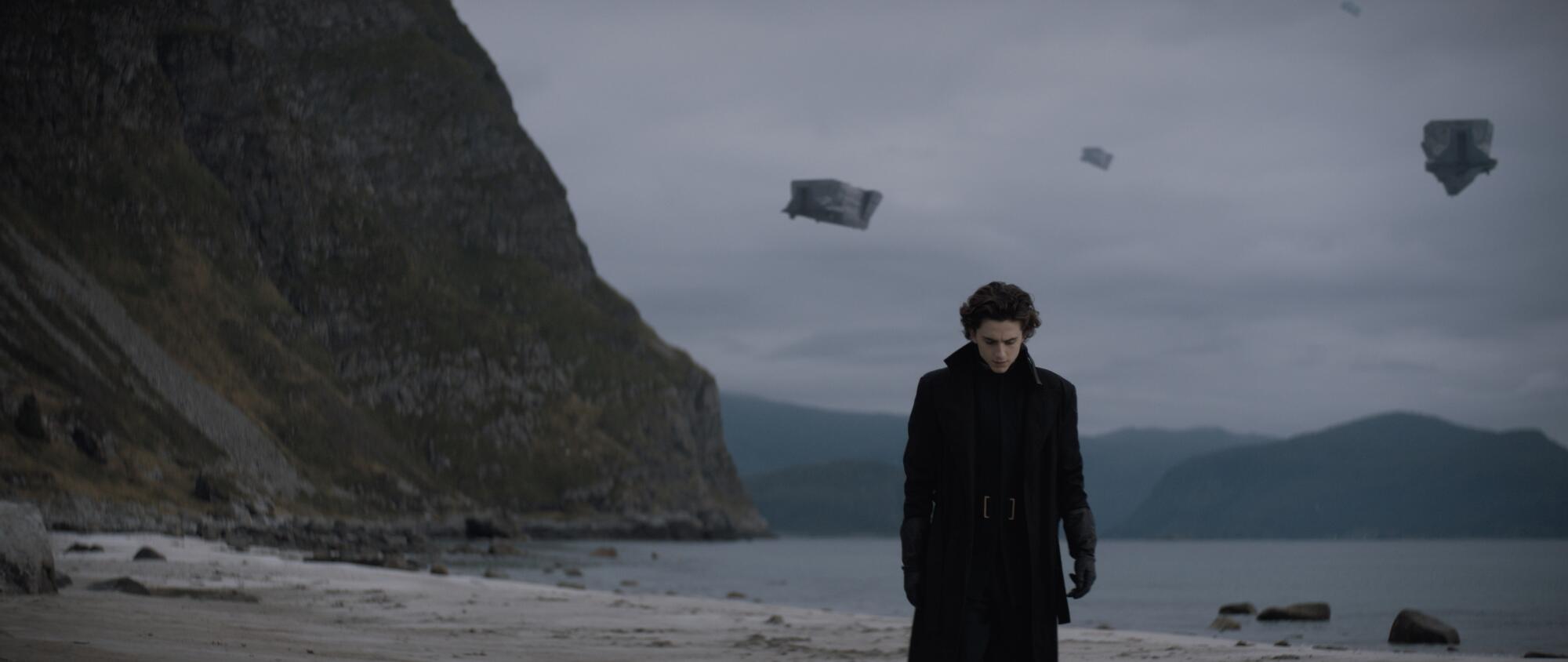
Caladan’s Canada-inspired color palette contrasts mightily with the sun-baked Arrakis. “We go to Arrakis and bam! Paul’s squinting in this harsh light like he’s been shaken by the shoulders,” Vermette says. While location-scouting in Jordan with Villeneuve and line producer Joe Chacon, Vermette realized the desolate Wadi Rum desert would provide an utterly inhospitable setting for Arrakis.
“In Jordan, we were really struck by these washed-out metallic skies as opposed to the beautiful blue skies of ‘Lawrence of Arabia.’ ‘Dune’ is a much harsher world. Denis’ idea was, ‘Let’s find a desert where, if you wander into it, you die. That’s what Arrakis should be.’”
The pallid skies of Jordan-as-Arrakis serve as backdrop to airborne war machines inspired by Vermette’s fondness for insects. One tiny predator resembles a high-tech cockroach. An ovoid-shaped airship calls to mind a 1920s-era zeppelin, although Vermette explains, “It’s basically an armadillo that’s been squashed.”
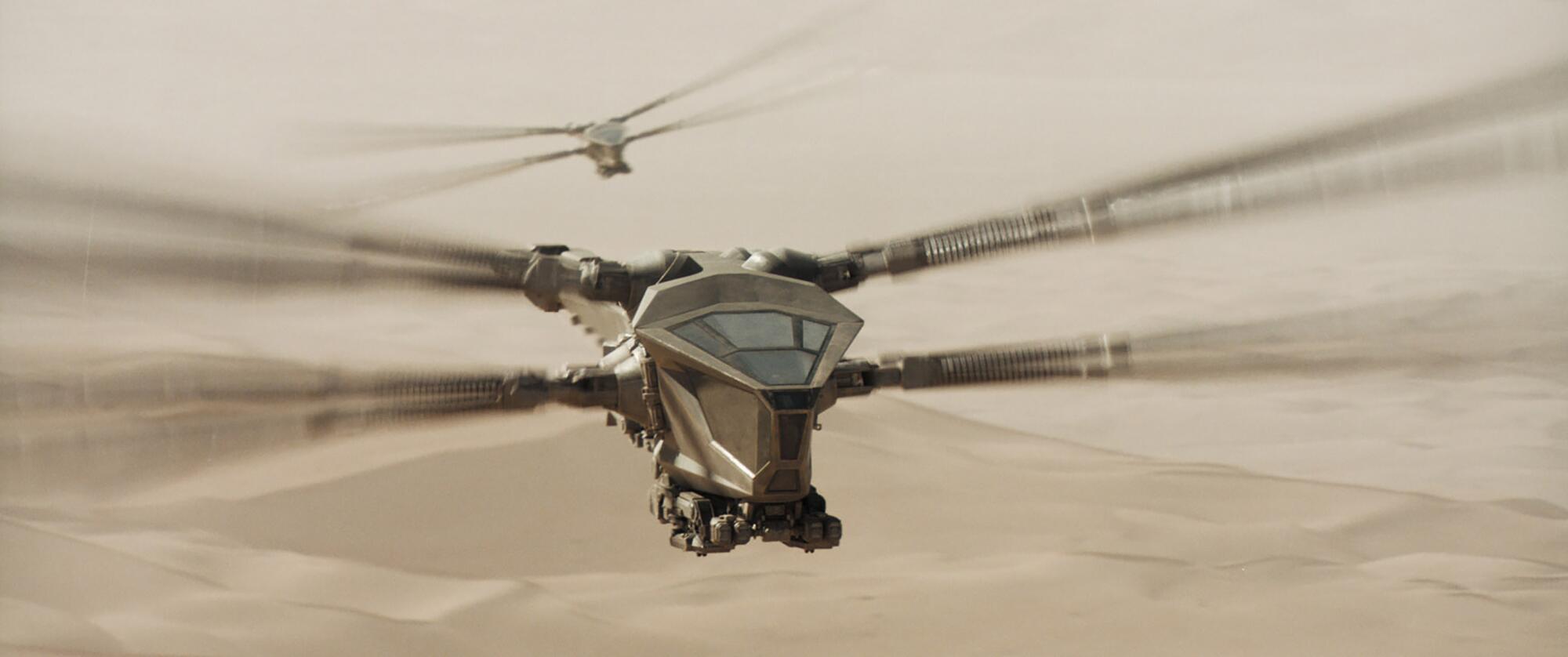
And for the wing-sprouting helicopter-like war machines known as Ornithopters, Vermette gave concept designer George Hull a simple directive. “My brief to George was: dragonfly.” The resulting aircraft, weighing in at about 10 tons, were manufactured in England and shipped to Jordan, complete with fully functioning retractable wings.
In designing Arrakis’ gargantuan sandworms, Vermette again found analogs in nature. “They needed to look dangerous but we didn’t want the sandworms to have big teeth,” Vermette says. “That wouldn’t make sense because what would they be chewing on in the middle of the desert? So I suggested the sandworm should maybe have little teeth like that of a whale, which filters plankton. In the same way, sandworms would find their nutrients in the sand.” As for the worm’s leathery-looking epidermis, Vermette says the monster’s skin was “very much influenced by the roots and bark of certain trees and also by [the hide of] the rhinoceros, because the sandworm has a bit of hair.”
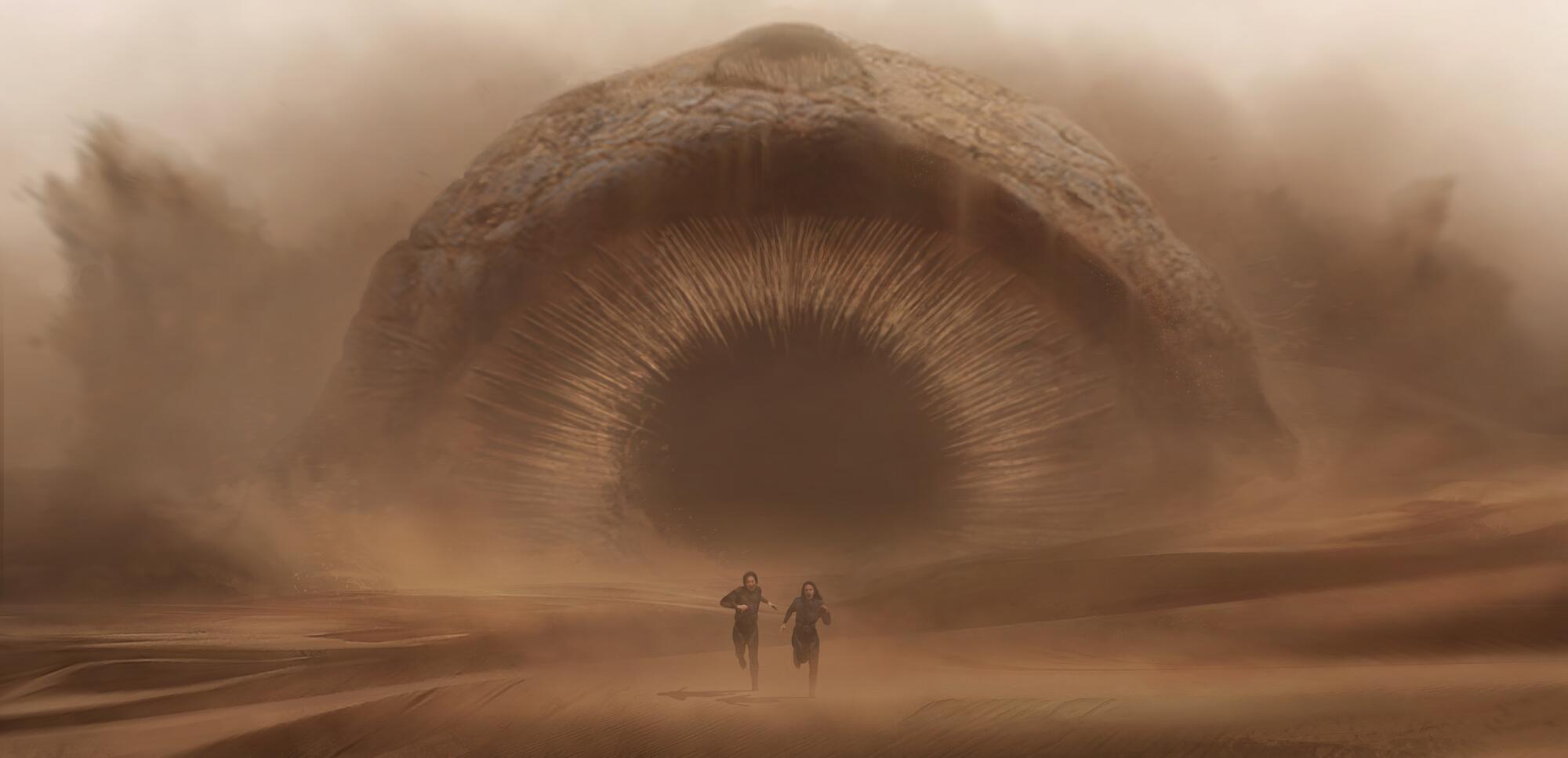
Emerging from the “Dune” bubble after more than a year of detail-obsessed world-building, Vermette believes Herbert’s prescient storytelling has been well served by Villeneuve’s heartfelt adaptation. “The biggest challenge on this movie was to support the inner child of Denis Villeneuve by bringing to life this vision of ‘Dune’ he had when he was 13 years old.”
That futuristic vision of a galaxy gone bad seems to have stood the test of time, according to Vermette. “Frank Herbert was a product of his own generation, but like all good science fiction, ‘Dune’ foresaw what’s going on today. There’s still colonialism, exploitation, we don’t treat the planet as we should. Herbert absolutely saw the future.”
More to Read
From the Oscars to the Emmys.
Get the Envelope newsletter for exclusive awards season coverage, behind-the-scenes stories from the Envelope podcast and columnist Glenn Whipp’s must-read analysis.
You may occasionally receive promotional content from the Los Angeles Times.










